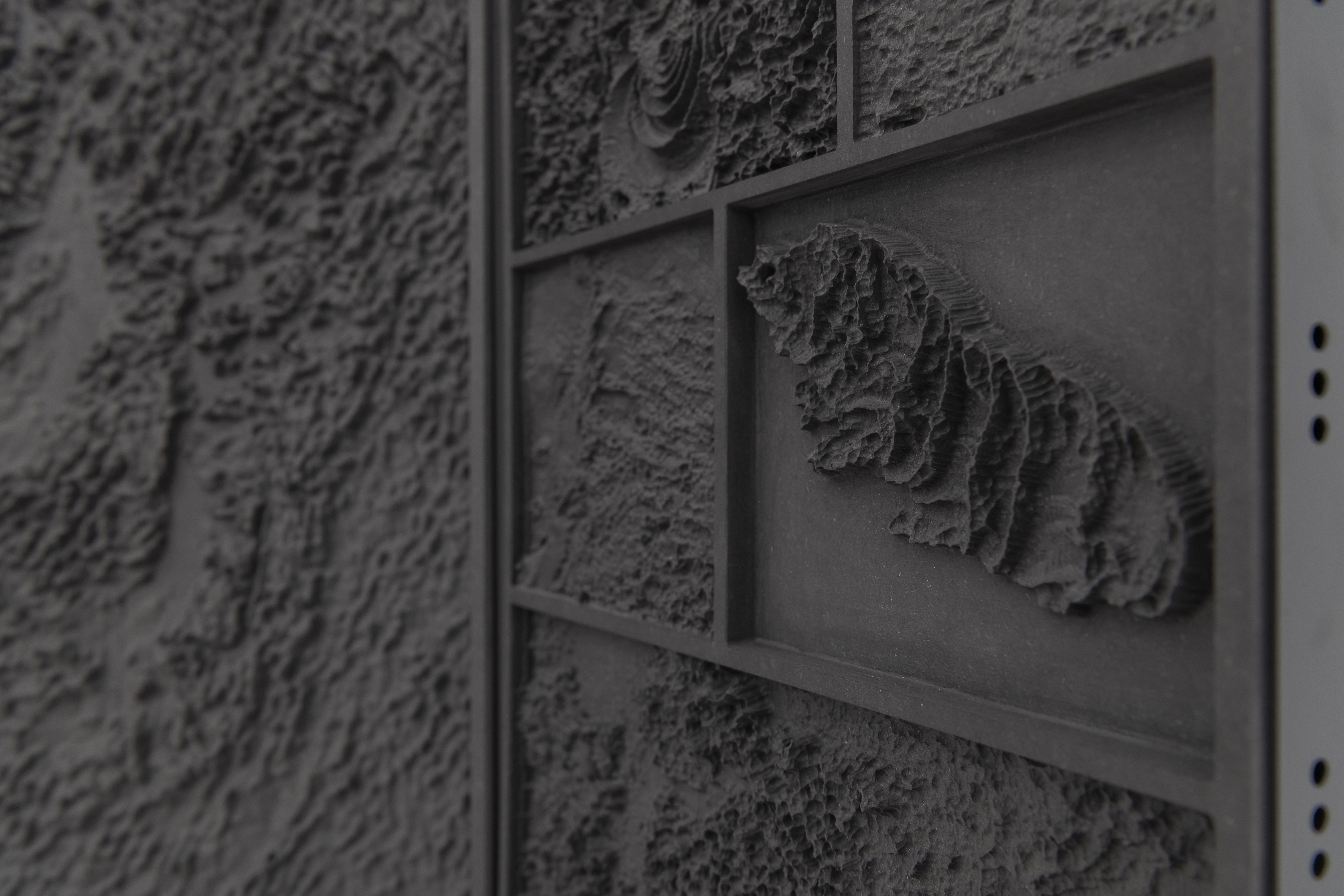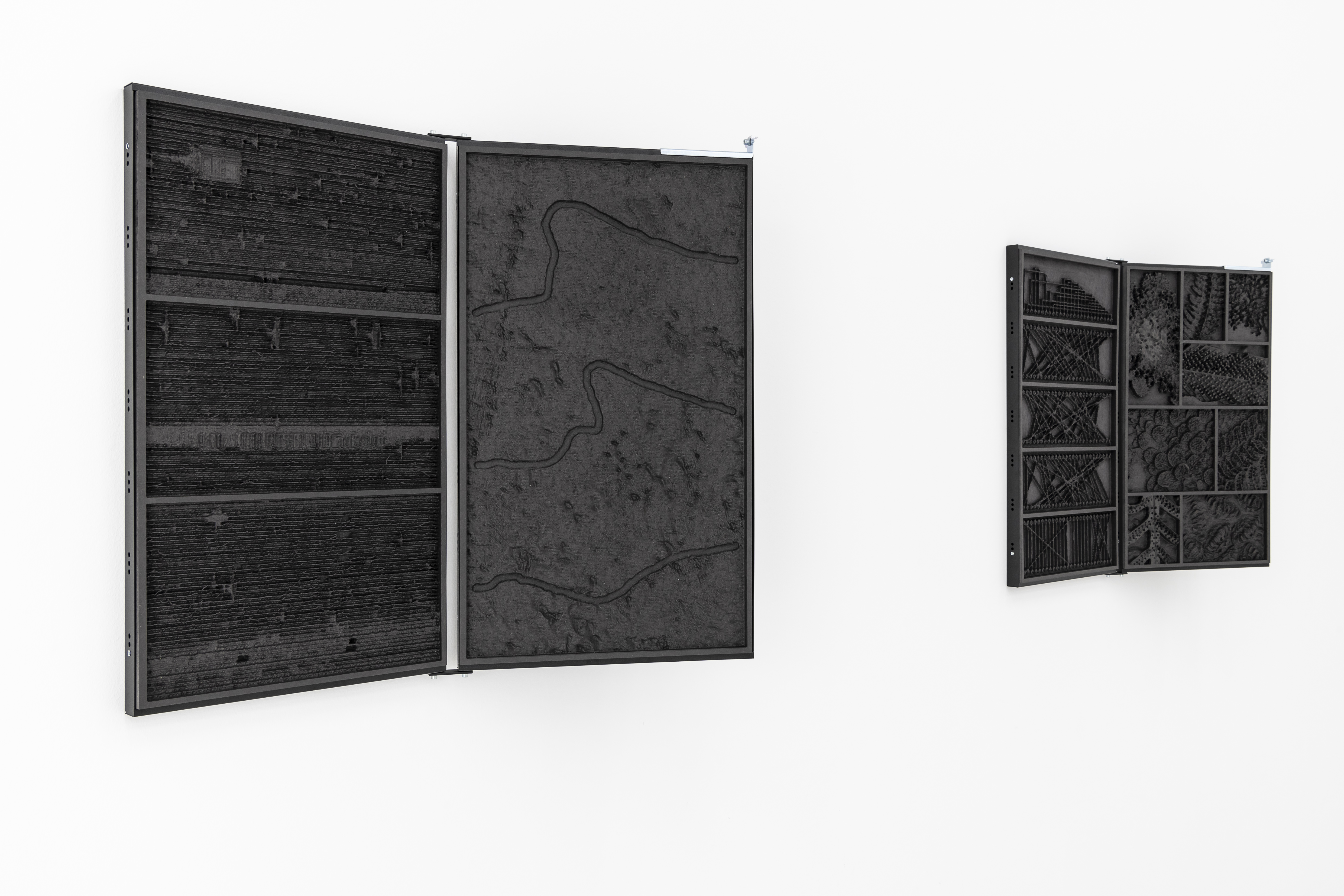Hinged Collisions
2018 – wooden panels, server rack trays, steel hinges
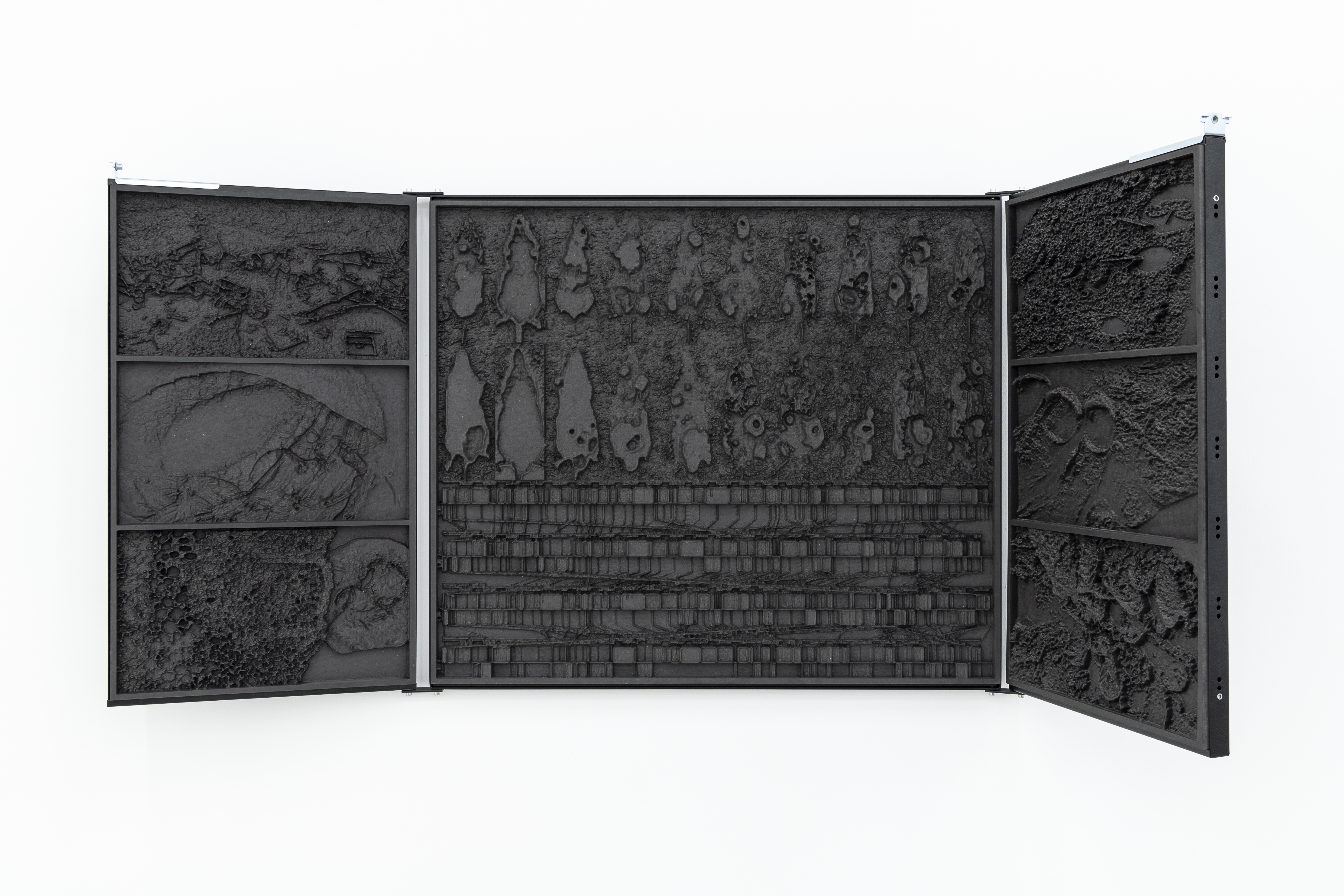
Hinged Collisions (2018) revisit the connection to the divine idea, that is to say, its veneration. Formally speaking, these works are reminiscent of winged altarpieces, and in a similar way to medieval painting’s use of individual small pictures, they endeavour to suggest temporality. The black wooden CNC-machined reliefs are framed in server racks. In their format, colour and usage, these racks allude to monitors and their configuration on the desks of traders. The content of the reliefs also reference different catastrophes (in the original sense), that is to say, the moment of reversal and paradigm shift. In addition, the motifs themselves represent an important shift in the history of images: none of the motifs have been derived from an illustration, image or a photograph as we know them. Herregraven makes use of data and code, which is automatically generated, analysed and processed, and intervenes further as a human entity in this chain of communication in order to ask what actually constitutes an image nowadays. Data can be converted into pixels so that we can see it. However, this visible form is completely arbitrary and serves to aid our better understanding. Nowadays, machines – such as satellites – gather data, which they stream to other machines. This data is neither meant for nor be legible to the human eye. The graph visualising movement on the stock market is not required by a computer, but we need it in order to understand data generated by machines. Although the Hinged Collisions are not predicated upon our reality, we still think that we can recognise landscapes or figurative elements. For Herregraven, the dominance of data collection over the image per se poses new questions of its own: what is an image nowadays, when it is no longer about what we see but rather about the value of the underlying data that we cannot see? What are the consequences for the image and its time-honoured task of representation? Does this not mean that we are forcibly alienated from our own environment if we are no longer able to recognise it in images?
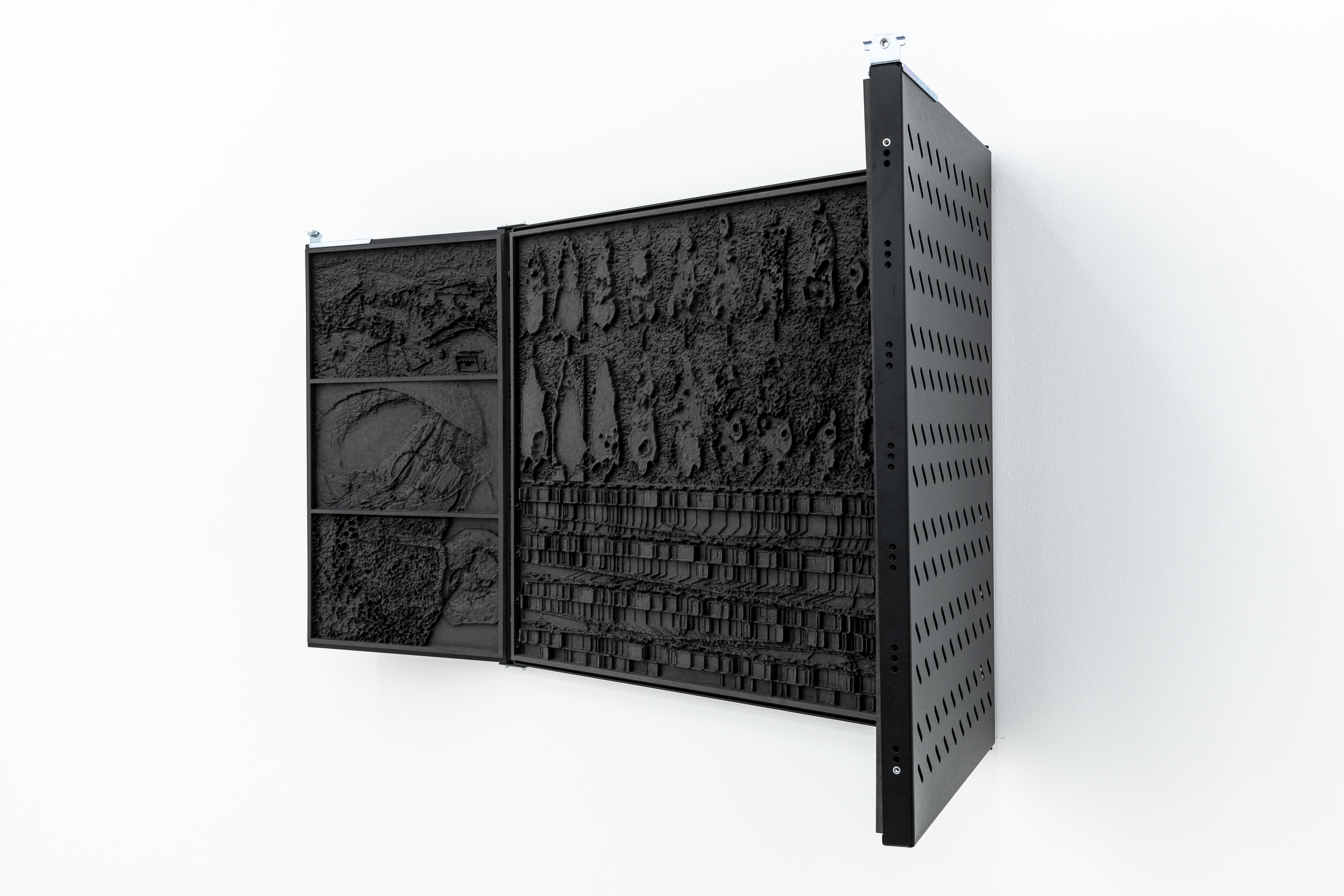
Hinged Collisions – Dormant Strain, triptych, 175 x 72 cm open, 85 x 72 cm closed
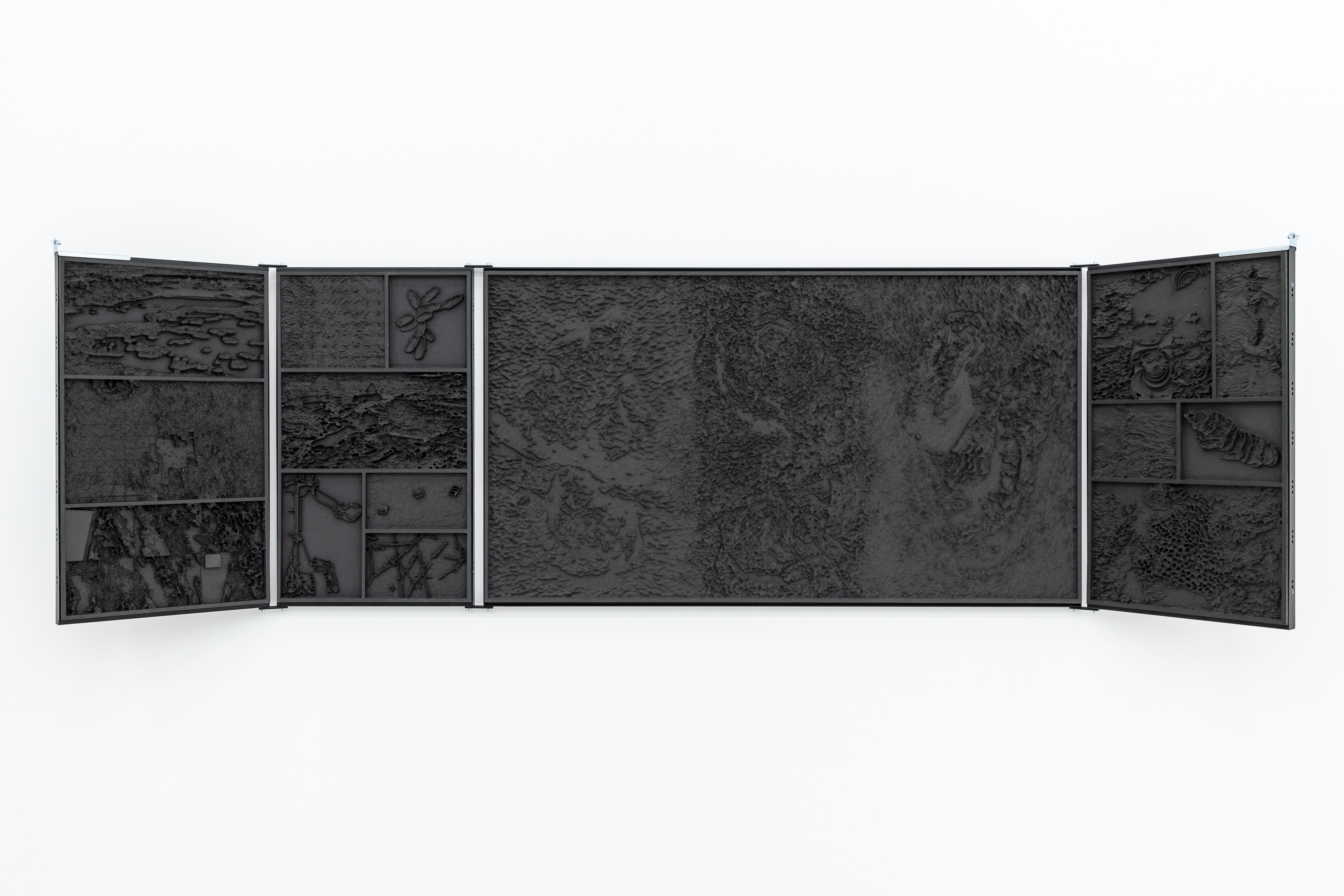
Hinged Collisions – Why humans weep, quadriptych, 255 x 72 cm open, 130 x 72 cm closed
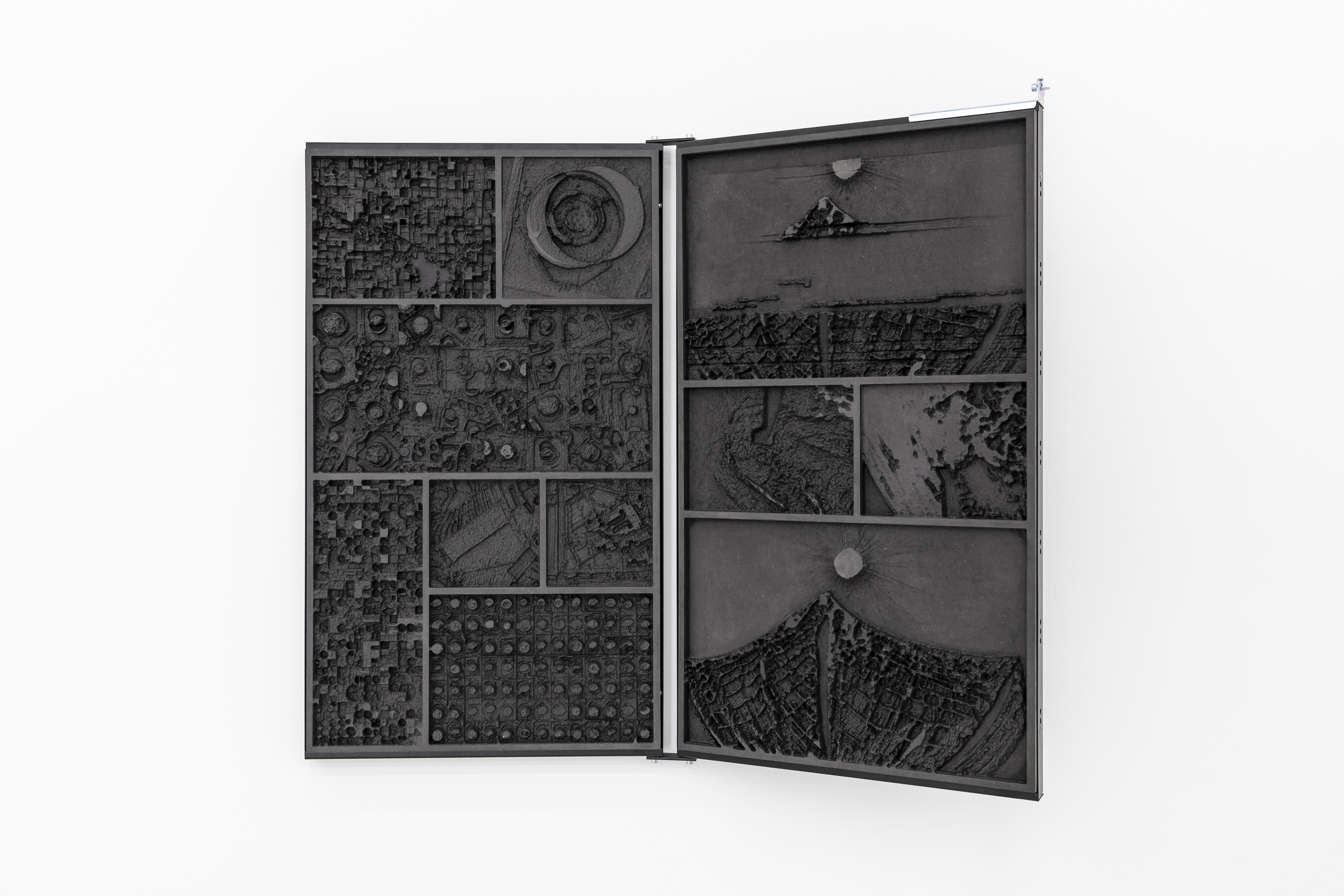
Hinged Collision – Optical Mining, diptych, 90 x 72 cm open, 43 x 72 cm closed
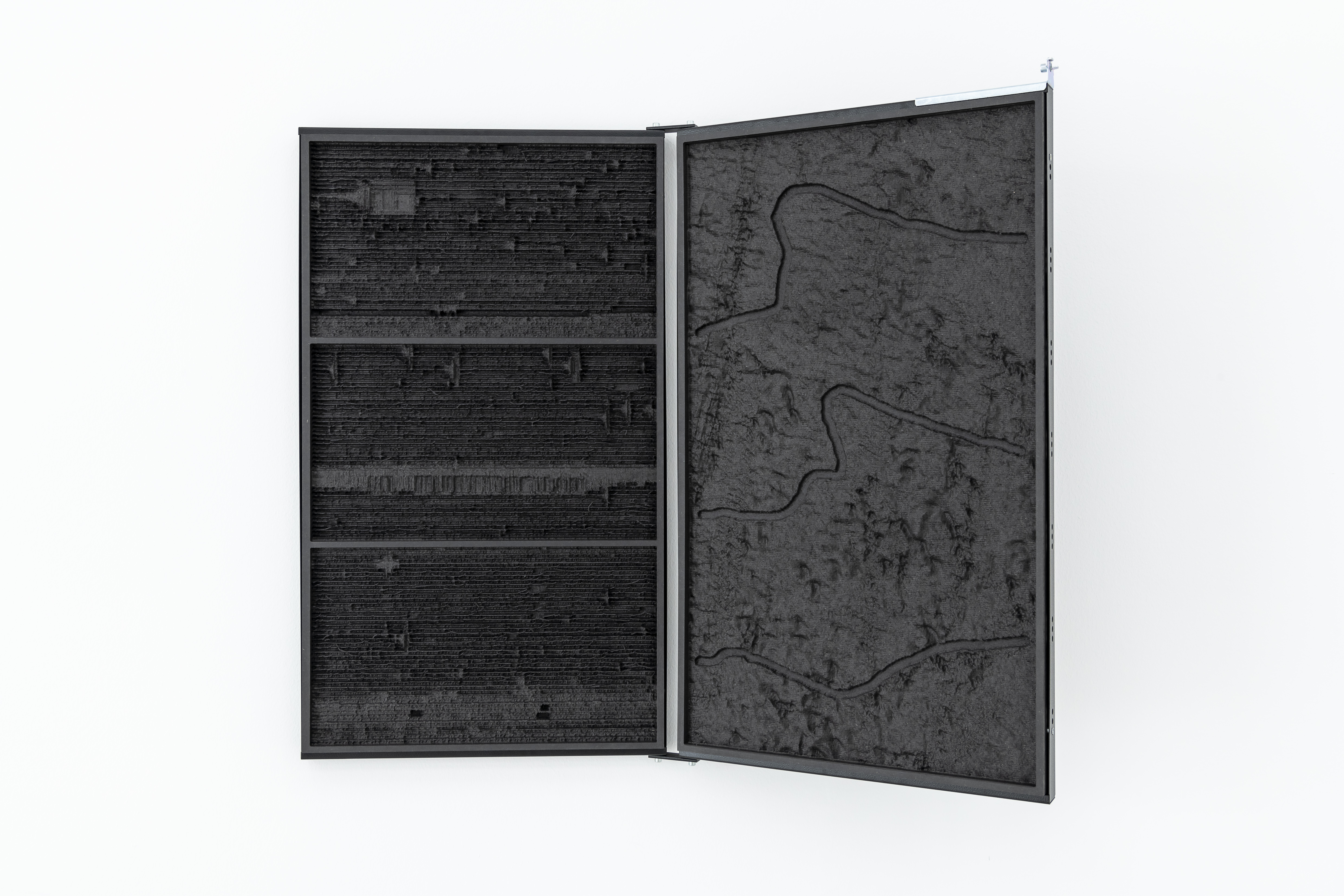
Hinged Collision – There have never been tigers east of Bali, diptych, 90 x 72 cm open, 43 x 72 cm closed
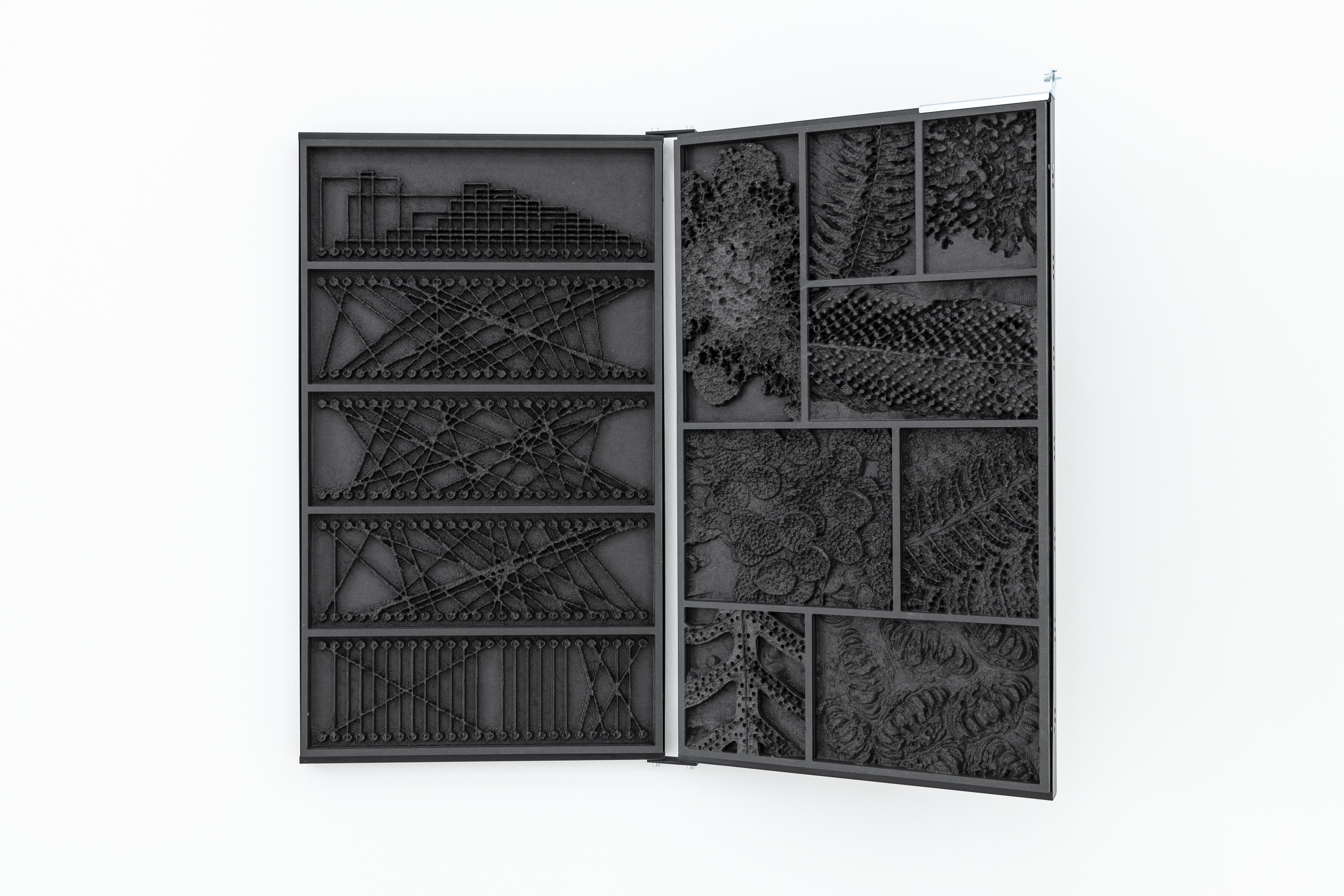
Hinged Collision – Cryptog(r)am, diptych, 90 x 72 cm open, 43 x 72 cm closed
Installation views and text
‘Femke Herregraven – A reversal of what is expected’
Westfälischer Kunstverein / Münster (DE)
July 7 – September 16, 2018

